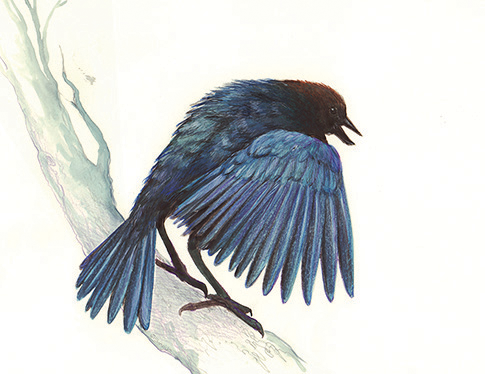What makes a multimodal signal attractive?
02-13-2018

Virtually all mating signals stimulate multiple sensory modalities in the receiver. However, we know little about how different components of the signal influence mating decisions. Kelly Ronald (who received a PhD degree from EEB), Esteban Fernandez-Juricic, Jeffrey Lucas, Rui Zeng (an Biology undergrad from our labs), and colleagues presented a graphical model that illustrates the variety of ways that signal components that stimulate different sensory modalities can jointly influence female mating decisions. The model was tested using female brown headed cowbirds choosing males based on a visual bow display coupled with a mating song. Our results showed that details of the visual signal components can have profound effects on a female’s preference for the song. This is particularly important because previous work has suggested that different signal components were most likely to have simple additive effects on female choice. Our data show that this is not at all the case in our system. This suggests that sexual selection acting on multimodal mating signals is much more complicated than we previously thought.
Ronald, KL, R Zeng, R Stewart, D White, E Fernandez-Juricic, JR Lucas. 2017. What makes a multimodal signal attractive? A preference function approach. Behavioral Ecology 28:677-687